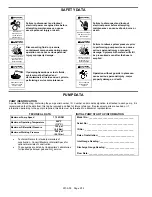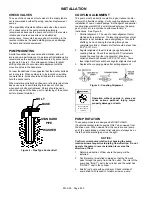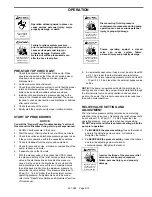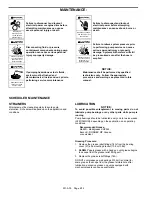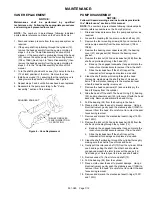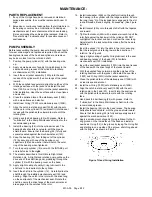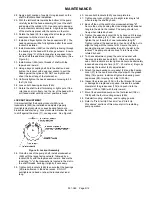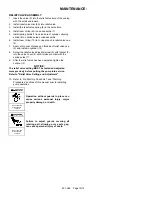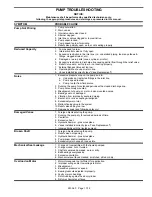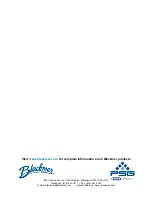
501-A00 Page 4/12
INSTALLATION
CHECK VALVES
The use of check valves or foot valves in the supply tank is
not recommended with self-priming, positive displacement
pumps.
If the possibility of liquid backflow exists when the pump is
off, a check valve in the pump discharge piping is
recommended because the pump can motor in the reverse
rotation and create undue stress on all attached
components. Never start a pump when it is rotating in the
reverse rotation as the added starting torque can damage
the pump and related equipment.
PUMP MOUNTING
A solid foundation reduces noise and vibration, and will
improve pump performance. On permanent installations it is
recommended the pumping unit be secured by anchor bolts
as shown in Figure 4. This arrangement allows for slight
shifting of position to accommodate alignment with the
mounting holes in the base plate.
For new foundations, it is suggested that the anchor bolts be
set in concrete. When pumps are to be located on existing
concrete floors, holes should be drilled into the concrete to
hold the anchor bolts.
When installing units built on channel or structural steel type
bases, use care to avoid twisting the base out of shape
when anchor bolts are tightened. Shims should be used
under the edges of the base prior to tightening of the anchor
bolts to prevent distortion.
BOLT
BASE
STANDARD
PIPE
WASHER
Figure 4 – Pipe Type Anchor Bolt
COUPLING ALIGNMENT
The pump must be directly coupled to a gear reducer and/or
driver with a flexible coupling. Verify coupling alignment after
installation of new or rebuilt pumps. Both angular and parallel
coupling alignment MUST be maintained between the pump,
gear, motor, etc. in accordance with manufacturer’s
instructions. See Figure 5.
1. Parallel alignment: The use of a laser alignment tool or
dial indicator is preferred. If a laser alignment tool or dial
indicator is not available, use a straightedge. Turn both
shafts by hand, checking the reading through one
complete revolution. Maximum offset should be less than
.005" (0.127 mm).
2. Angular alignment: Insert a feeler gauge between the
coupling halves. Check the spacing at 90° increments
around the coupling (four checkpoints). Maximum
variation should not exceed 0.005" (0.127 mm). Some
laser alignment tools will check angular alignment as well.
3. Replace the coupling guards after setting alignment.
Figure 5 – Coupling Alignment
Operation without guards in place can
cause serious personal injury, major
property damage, or death.
Do not operate
without guard
in place
PUMP ROTATION
These pump models are designed as RIGHT-HAND
(Counterclockwise) rotation pumps ONLY when viewed from
the driven end. When viewed from the non-drive end (pump
end), the pump intake port and relief valve must always be on
the left, and the discharge port on the right.
NOTICE:
Confirm correct pump rotation by checking the pump
rotation arrows respective to piping flow direction. Do not
operate the pump in reverse rotation to reverse the
direction of flow.
1. Determine direction of flow where the pump will be
installed.
2. Confirm pump is installed in piping so that the flow will
pass through the pump from inlet to outlet. The inlet of the
pump has “INLET” cast in the cylinder and the outlet has
“OUTLET” cast in the cylinder.
3. Briefly “jog” pump with pump driver. Check rotation of
pump driver with respect to rotation arrow on pump.


